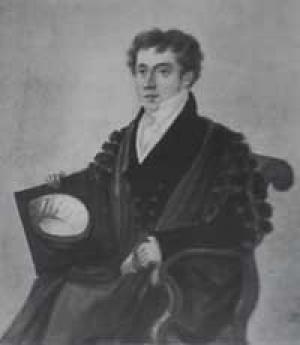Octavius Morgan facts for kids
Quick facts for kids
Octavius Morgan
|
|
|---|---|
 |
|
| Member of Parliament for Monmouthshire |
|
| In office 1841–1874 |
|
| Preceded by | William Addams Williams |
| Succeeded by | Frederick Courtenay Morgan |
| Personal details | |
| Born | 15 September 1803 Newport |
| Died | 5 August 1888 (aged 84) |
| Nationality | Welsh |
| Political party | Conservative |
| Relatives | Charles Morgan, 1st Baron Tredegar, was his elder brother. |
| Education | Westminster School, Christ Church, Oxford |
| Occupation | Politician |
Octavius Morgan (born September 15, 1803 – died August 5, 1888) was an important British politician and historian. He was also an antiquary, which means he studied old things and history. He gave many valuable items to the British Museum.
Contents
Early Life and Education
Octavius Morgan was born on September 15, 1803. He was the fourth son of Sir Charles Morgan, who lived at Tredegar Park in Monmouthshire. His older brother was Charles Morgan, 1st Baron Tredegar.
Octavius went to school at Westminster School in London. Later, he studied at Christ Church, Oxford University. He earned his Master of Arts degree in 1832.
A Life in Politics and History
Octavius Morgan was a very active person. He was a member of several important groups that studied history and old objects. He was a Fellow of the Royal Society, which is a group for top scientists. He was also a Fellow of the Society of Antiquaries of London, a group for people who study ancient things. He even became the President of the Royal Archaeological Institute.
His Home, The Friars
Morgan had a lot of money. In 1839, he had his home, "The Friars," rebuilt. It was designed in the old Elizabethan style. This house used to be a home for Carmelite monks a long time ago.
People said he filled his house with old "Tudor furniture." He even had a special octagonal (eight-sided) preaching platform. It was halfway up his main wooden staircase! He would hold services there every day for his household staff.
Morgan was also interested in how things worked. He had a very special brass lock on his door. It had seven different controls, showing his interest in complex mechanisms.
Serving in Parliament
Octavius Morgan was a Member of Parliament (MP) for Monmouthshire. He served in this role from 1841 to 1874. He was a member of the Conservative political party.
Besides being an MP, he also served as a Justice of the Peace and a Deputy Lieutenant for Monmouthshire. These were important local roles. He was also the President of the Cambrian Archaeological Association from 1857 to 1858.
Studying Old Objects
Morgan loved studying old things. He published many papers about history. He wrote about astrolabes, which are old tools used to tell time and study stars. He also wrote about episcopal rings (rings worn by bishops) and old communion plates used in church services.
In 1852, Morgan shared important information about how gold and silver were tested and marked. This process is called assay and hallmarking. His work helped people learn how to find out the age and origin of old gold and silver items. This made collecting these items very popular.
In 1872, he wrote a helpful guide about the old monuments in the Priory Church of St Mary in Abergavenny.
Generous Gifts to the British Museum

During his life, Octavius Morgan gave many wonderful gifts to the British Museum. One famous gift was a nef. This was an amazing table decoration that was also an automaton. An automaton is a machine that can move on its own. This particular gift was known as the Mechanical Galleon, a ship-shaped clock, which he donated in 1866.
Later Life and Legacy
Octavius Morgan never married. He passed away on August 5, 1888, when he was 84 years old. He was buried in his family's vault at St Basil's Church in Bassaleg.
He left behind his amazing collections of clocks, astronomical tools, and episcopal rings. His astrolabes included a very old one from the 14th century. This astrolabe was once used in Damascus to call people to prayer.
Morgan's collection of papers, including his translations of Welsh poetry, are now kept at the National Library of Wales.
Today, his house, "The Friars," is used as an educational facility. Some parts of the house, like the dairy and orangery, are gone. But it is said that the house still has Latin words hidden in its wooden carvings. There is also a grand fireplace from Germany with his initials on it.

